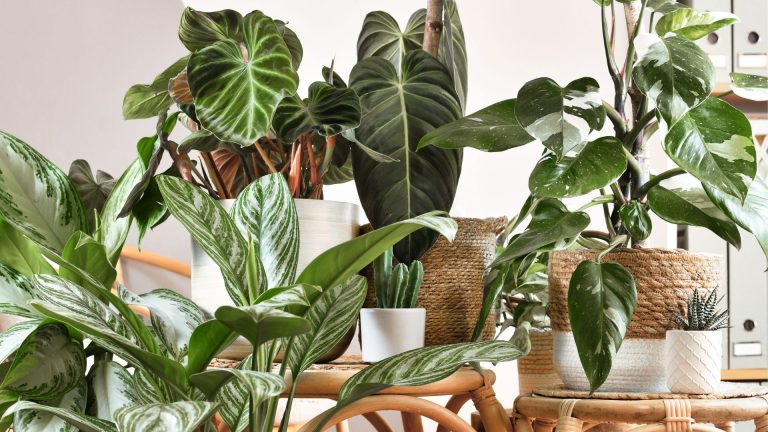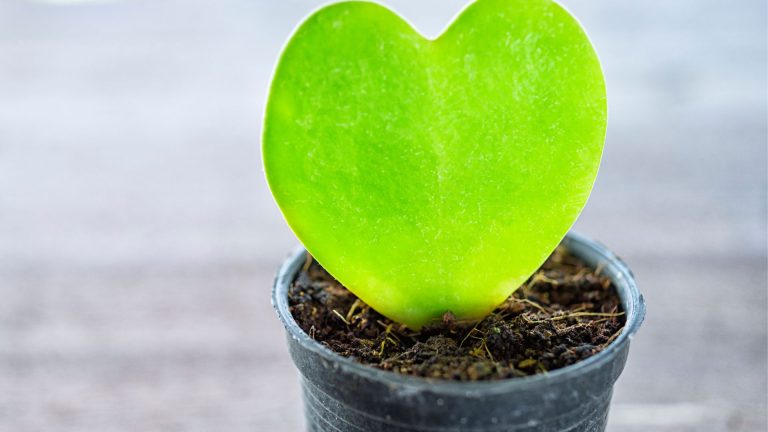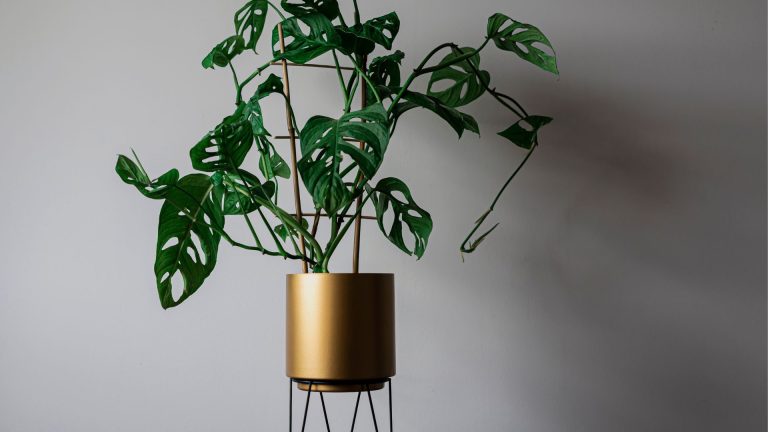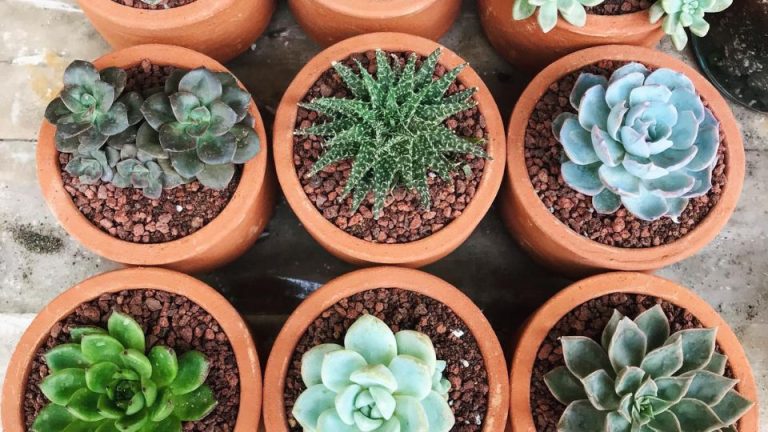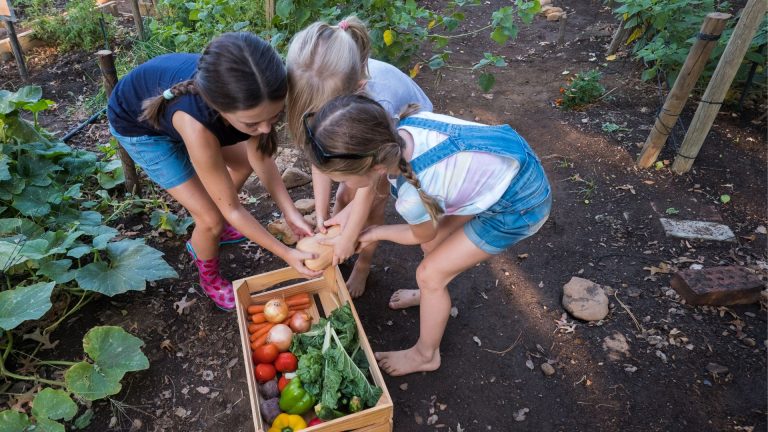How to Build a Fun and Educational Terrarium with Your Kids
If you’re looking for a hands-on activity that’s fun, educational, and a great way to connect kids with nature, building a terrarium is the perfect project. A terrarium is like a tiny, magical garden that you can create and nurture indoors. It’s an excellent way for kids to learn about plants, ecosystems, and the importance of caring for living things, all while being creative. Plus, it’s an activity that allows children to see their hard work grow and flourish over time.
In this blog post, we’ll walk you through the steps to building a terrarium with kids. We’ll go over everything from recommended materials to plants, and even some helpful tips to make the experience educational and enjoyable for everyone involved!
What is a Terrarium?
A terrarium is a small, enclosed garden that mimics a natural environment in a clear container. It’s a miniature ecosystem where plants, soil, water, and sometimes small decorative elements like figurines or rocks, can coexist in harmony. The beauty of a terrarium is that it’s self-sustaining, and with the right plants and materials, it’s easy to care for.
Building a terrarium is more than just a fun craft activity; it also offers valuable learning opportunities. Through this hands-on project, kids can explore how plants grow, how ecosystems work, and how to take responsibility for something living.
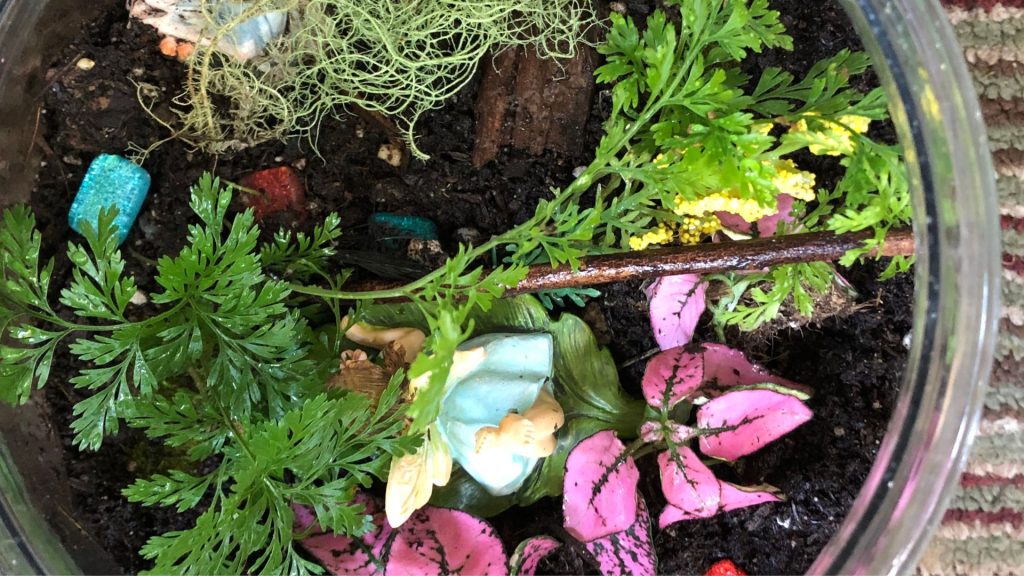
Why Building a Terrarium is Great for Kids
- Educational Value:
Terrariums provide kids with the chance to learn about plant biology, ecosystems, and environmental science. Kids will gain insights into how plants grow, how water cycles work, and how to care for living things. - Develops Responsibility:
A terrarium requires regular care. Kids will learn how to water their plants, check for problems like mold or pests, and ensure the plants are getting enough light. It’s a great way to teach kids responsibility in a fun and interactive way. - Encourages Creativity:
Kids can get creative with their terrariums by choosing plants, arranging them in different patterns, and adding decorative elements like tiny figurines, rocks, and even miniature furniture. It’s a chance for them to build something truly unique. - A Low-Maintenance Indoor Garden:
Unlike outdoor gardens, terrariums are self-contained, low-maintenance, and perfect for indoor spaces. They’re a great way to introduce kids to gardening, especially if you don’t have much outdoor space.
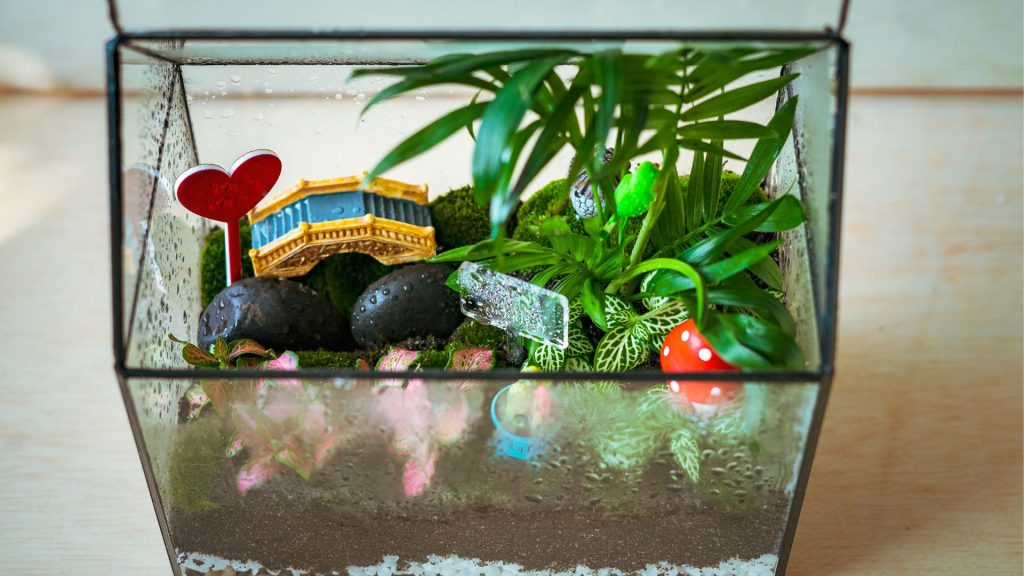
Materials Needed to Build a Terrarium
Building a terrarium requires just a few basic materials, which are easy to find and can be sourced at home or from a local garden store. Here’s what you’ll need:
1. A Clear Container:
The first and most important component of your terrarium is the container. Since the idea is to create a miniature ecosystem that can be observed, the container should be transparent. You can use a glass jar, a fish tank, a vase, or any other clear container you have on hand. The size of the container will depend on how many plants you want to include, but something with a wide opening works best for easy access.
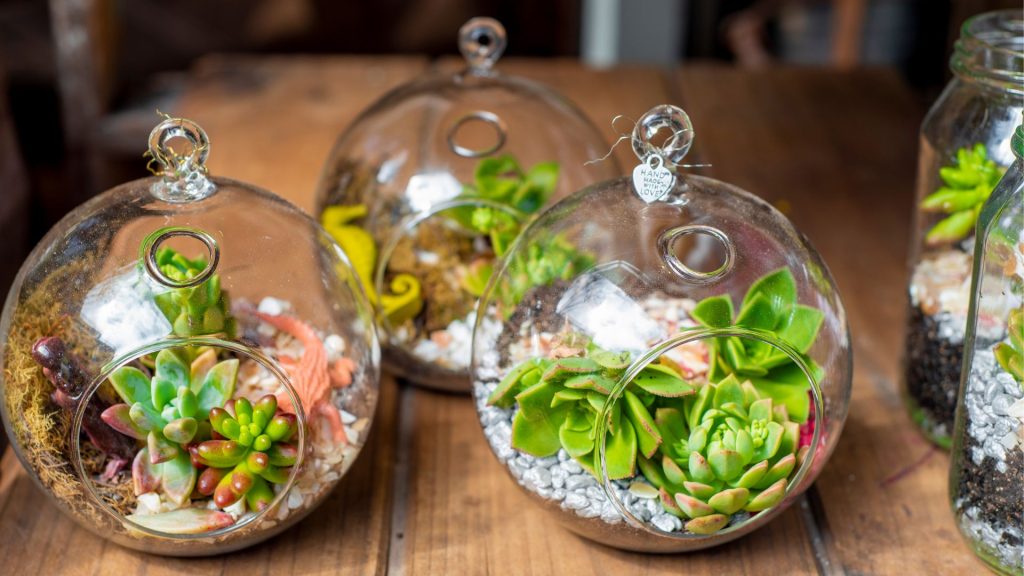
2. Pebbles or Small Rocks:
Pebbles or small rocks are crucial for creating drainage at the bottom of the terrarium. Plants need proper drainage to prevent water from pooling and causing root rot. The pebbles will allow excess water to flow through the soil and into the bottom of the container, keeping the plants healthy.
3. Activated Charcoal:
Activated charcoal helps keep the terrarium fresh by preventing odors and mold. It’s an optional, but highly recommended addition. You can find activated charcoal at most pet stores (often used for aquariums) or garden centers.
4. Potting Soil:
Use a well-draining potting mix that is appropriate for the plants you’ve chosen. For most small plants and succulents, a general-purpose potting soil will work fine. If you’re using moisture-loving plants like ferns or moss, you can choose a potting mix designed for these types of plants.
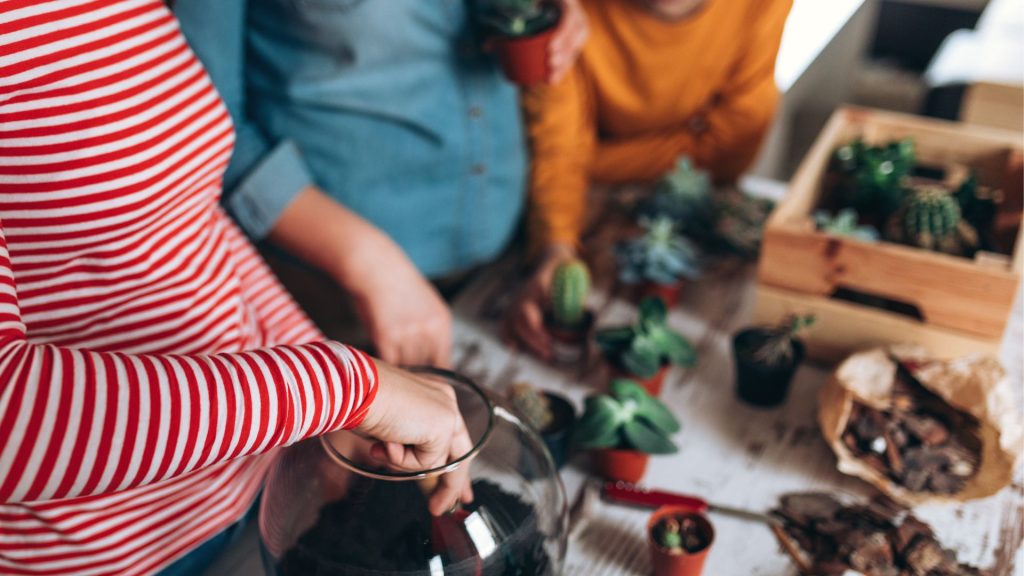
5. Small Plants:
The plants you choose for your terrarium should be low-maintenance and thrive in the same environment. Here are some popular plant options for terrariums:
- Succulents: These plants are hardy, easy to care for, and come in a variety of shapes and sizes. They do well in drier conditions and are a great option for closed or open terrariums.
- Air Plants (Tillandsia): Air plants are unique because they don’t require soil! They absorb moisture and nutrients through their leaves. These plants are perfect for open terrariums.
- Ferns: Soft, leafy ferns like the button fern or the maidenhair fern are excellent for adding a lush, tropical feel to your terrarium. They thrive in humid environments, making them great for closed terrariums.
- Moss: Moss is a versatile and low-maintenance plant that does well in both open and closed terrariums. It provides a soft, green base and adds texture to the landscape.
- Creeping Jenny or Pilea: These low-growing, trailing plants are perfect for adding some depth and volume to your terrarium design.
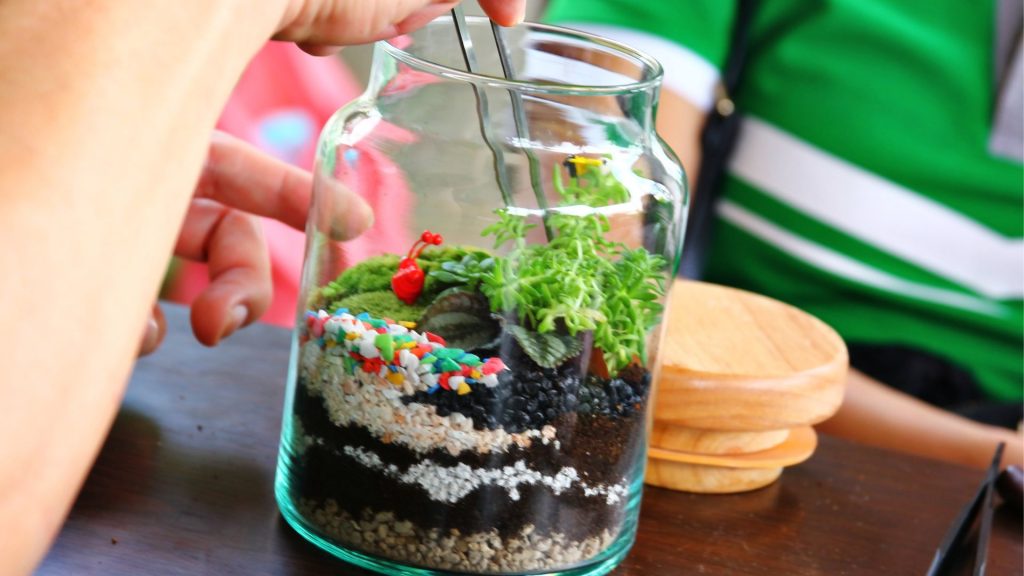
6. Decorative Elements (Optional):
This is where the fun and creativity come in! Kids can decorate their terrariums with small items like figurines, tiny stones, shells, or even miniature furniture to create a fairy-tale garden or a tiny world of their own.
7. Watering Can or Spray Bottle:
A small watering can or spray bottle is the best way to gently water your terrarium plants without disturbing the soil too much. Make sure to use only a small amount of water at a time, as overwatering can be a problem in terrariums.
Steps to Building a Terrarium for Kids
Step 1: Choose and Prepare Your Container
Start by selecting your container. Glass containers with wide openings work best because they allow easy access to the plants. Clean the container thoroughly to remove any dust or debris.
Step 2: Create the Drainage Layer
Begin by adding a layer of small pebbles or rocks to the bottom of your container. This helps with water drainage and prevents root rot. The layer should be about 1-2 inches deep, depending on the size of your container.
Step 3: Add Activated Charcoal (Optional)
Next, sprinkle a thin layer of activated charcoal over the pebbles. This will help prevent any odors and mold from forming inside the terrarium. It’s an optional step, but it’s highly recommended for maintaining a fresh environment.
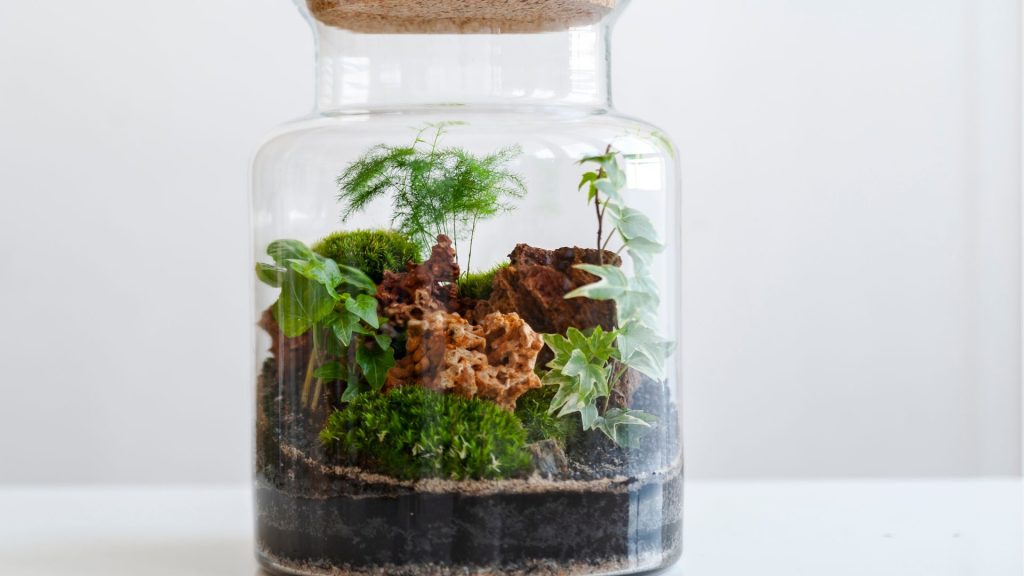
Step 4: Add Potting Soil
Add a layer of potting soil on top of the charcoal. The thickness of the soil layer will depend on the size of the plants you’re using, but aim for about 2-3 inches. Use a spoon or trowel to gently pat the soil down.
Step 5: Arrange the Plants
Carefully remove your plants from their pots and shake off any excess soil. Place the plants in your terrarium one at a time. Start with the larger plants at the back and work your way forward with smaller plants. Make sure each plant has enough space to grow, and don’t overcrowd them. Kids can get creative with how they arrange the plants—whether they prefer a symmetrical design or a more natural, free-flowing look.
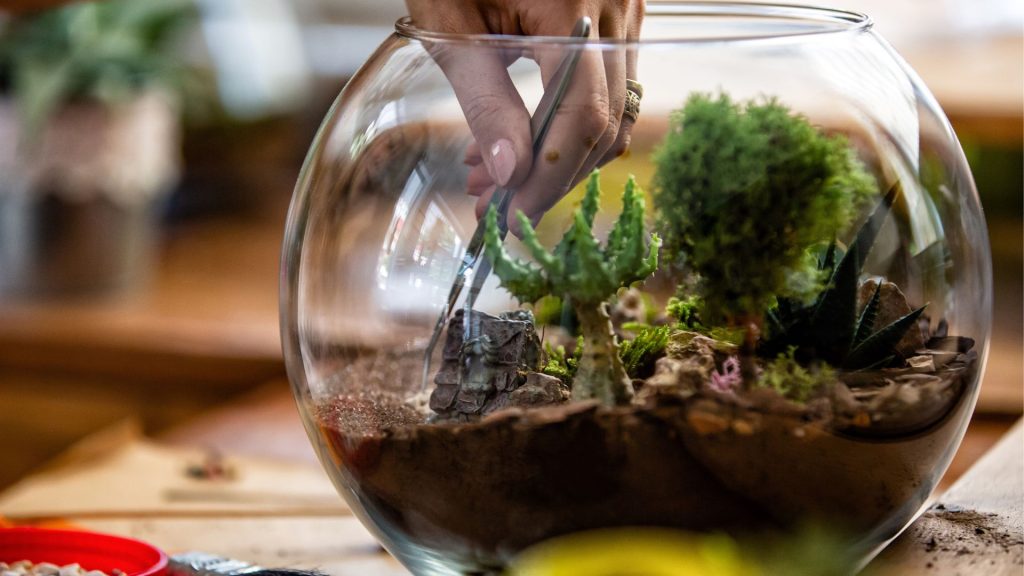
Step 6: Add Decorative Elements
Once the plants are in place, it’s time to decorate! Kids can place tiny figurines, rocks, shells, or anything else they like to personalize their terrarium. You can even add some fun elements like small toys or fairy lights to make it extra special.
Step 7: Water the Plants
Gently water the plants using a spray bottle or watering can. Be sure not to overwater, as excess moisture can lead to mold or mildew. A light misting is usually enough to keep the plants healthy.
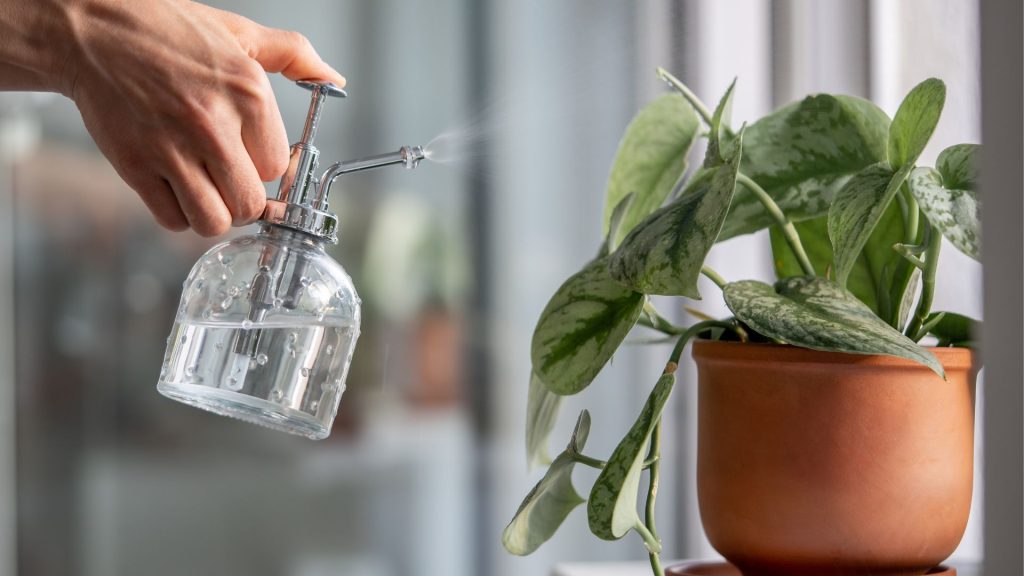
Step 8: Place Your Terrarium in the Right Spot
Find a bright spot for your terrarium, but avoid placing it in direct sunlight as this can cause overheating. A place with indirect sunlight is perfect. If your container has a lid, you can create a more humid environment for plants like ferns and moss by keeping the lid on.
Step 9: Maintain Your Terrarium
Terrariums are relatively low-maintenance, but they still require care. Check the moisture level every few days and water as needed. If the plants look too dry or too wet, adjust accordingly. Be sure to remove any dead leaves or plants, and keep an eye on the health of your miniature garden.
Tips for Successful Terrariums
- Avoid Overwatering: One of the biggest mistakes people make with terrariums is overwatering. Be cautious about the amount of water you use, and always check the moisture level before adding more.
- Use Plants with Similar Needs: Make sure the plants you choose have similar light and moisture requirements. This will help ensure they all thrive in the same environment.
- Create Layers: If your container is large enough, create different levels by placing rocks or other items to elevate certain plants. This adds dimension to the terrarium and makes it more visually appealing.
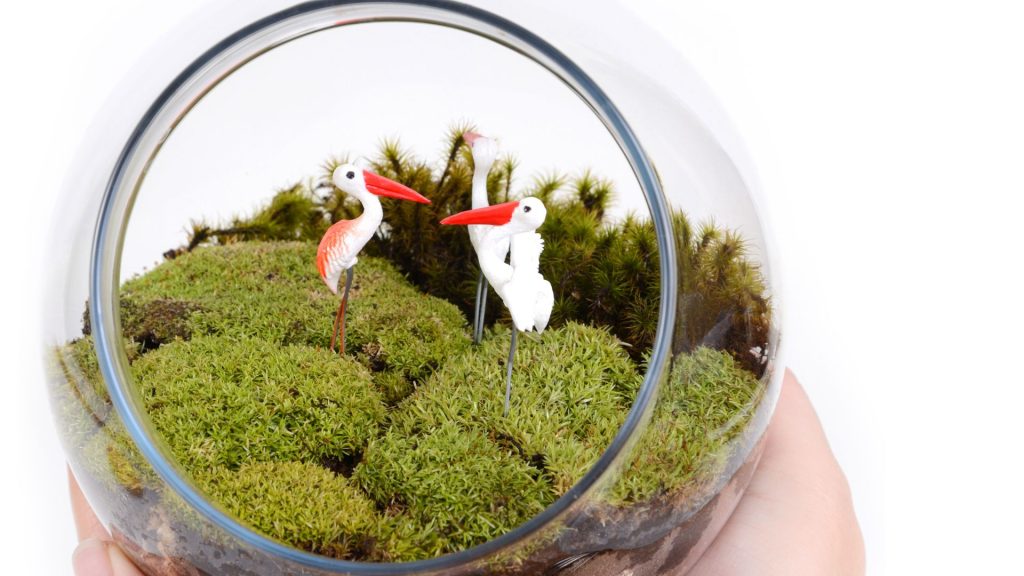
Sunny Thoughts
Building a terrarium is a fantastic project for kids, offering an opportunity to combine creativity with learning. It’s a wonderful way to introduce children to the world of plants and nature, and it provides them with a chance to take responsibility for a living ecosystem. Whether you’re building a small jar terrarium or a larger glass garden, this fun activity will be something your kids will enjoy for weeks or even months to come.
Have you built a terrarium with your kids before? What plants did you choose, and how did your terrarium turn out? Share your tips and experiences in the comments below!


